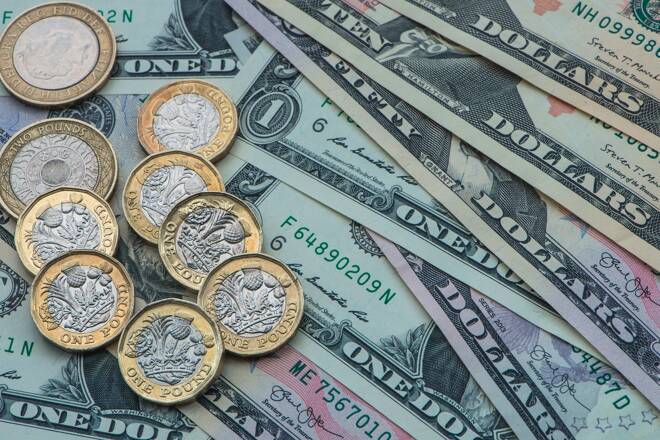Advertisement
Advertisement
GBP/USD Forecast: Sterling Gains Ground, UK Wage Growth Takes Center Stage
By:
UK's wage growth dilemma: Will steady unemployment and wage upticks push the Bank of England to raise interest rates?
Highlights
- On Monday, the GBP/USD gained 0.57%, ending the day at $1.22115.
- UK wage growth and employment numbers will be in the spotlight on Tuesday.
- However, Fed speeches and US retail sales figures also need consideration.
Overview of the Monday Session
On Monday, the GBP/USD gained 0.57%. Reversing a 0.27% loss from Friday, the GBP/USD pair ended the day at $1.22115. The GBP to USD pair fell to a low of $1.21285 before rising to a high of $1.22194.
UK Wage Growth and Unemployment in the Spotlight
UK claimant counts, the unemployment rate, and wage growth will garner investor interest on Tuesday. A steady unemployment rate and a pickup in wage growth may force the Bank of England (BoE) to push interest rates higher.
Wage growth remains a bugbear for the BoE. Upward trends in wages counter interest rate hikes and fuel consumption and demand-driven inflation. The BoE may need to lift rates higher to counter wage growth and curb spending.
Economists expect an 8.3% YoY increase in average earnings with bonuses for the three months to August (down from July’s 8.5%). If the unemployment rate remains at 4.3% as predicted, this could reduce pressure on the BoE to raise interest rates.
Beyond the numbers, Monetary Policy Committee Member Swati Dhingra is on the BoE calendar to speak. A response to the UK employment figures warrants investor consideration.
The Fed and US Retail Sales in Focus
US retail sales figures for September will draw investor interest on Tuesday. A larger-than-expected rise in retail sales may refuel bets on a Fed interest rate hike. Economists forecast retail sales to increase by 0.3% in September compared with +0.6% in August.
A pickup in consumer spending would fuel demand-driven inflation, pressuring the Fed to lift interest rates. Higher interest rates would impact borrowing costs and disposable income. A downward trend in disposable income would curb consumer spending and dampen inflationary pressures.
Beyond the numbers, FOMC members John Williams, Thomas Barkin, and Michelle Bowman are on the economic calendar to speak. Upbeat retail sales figures and hawkish chatter would support the buying appetite for the US dollar.
Away from the economic calendar, news updates from the Middle East also warrant consideration. An escalation in the conflict would see investors move to the safety of the US dollar.
Short-Term Forecast
With the BoE indicating future policy decisions are finely balanced, the UK wage growth numbers could prove pivotal. Softer wage growth may ease pressure on the BoE to lift rates higher and leave monetary policy divergence tilted in favor of the greenback.
GBP to USD Price Action
Daily Chart
The GBP/USD pair remained below the 50-day and 200-day EMAs, affirming bearish price signals. Significantly, the 50-day EMA slid back from the 200-day EMA, another bearish signal.
Softer UK wage growth and better-than-expected US retail sales figures would pressure the GBP/USD. A drop below the session low of $1.21930 would bring $1.21500 into view.
However, dovish Fed commentary and weak US retail sales figures would support a breakout from the $1.22150 resistance level. A break above the $1.22150 resistance level would bring the 50-day EMA into play.
The 14-period daily RSI reading of 43.17 supports a GBP/USD fall to $1.21500 before entering oversold territory.
4-Hourly Chart
The GBP/USD remains below the 50-day and the 200-day EMAs, reaffirming bearish price signals.
A GBP/USD breakout from the 50-day EMA and the $1.22150 resistance level would give the bulls a run at the 200-day EMA. Selling pressure will intensify at $1.22090. The 50-day EMA is confluent with the $1.22150 resistance level.
However, a fall below $1.21500 would support a move toward the $1.19055 support level.
With an RSI reading of 49.64 for the 14-period 4-hourly Chart, the GBP/USD could fall below $1.21500 before entering oversold territory.
About the Author
Bob Masonauthor
With over 28 years of experience in the financial industry, Bob has worked with various global rating agencies and multinational banks. Currently he is covering currencies, commodities, alternative asset classes and global equities, focusing mostly on European and Asian markets.
Advertisement
